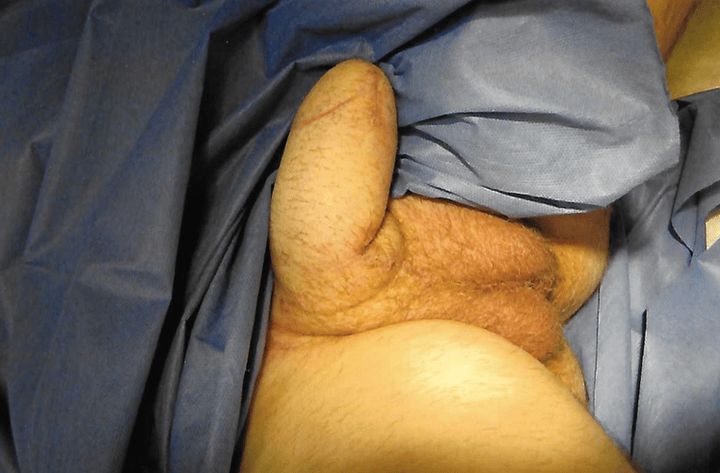Early in my career as the first osteopathic physician fully trained in the specialty of plastic and reconstructive surgery, I was determined to learn the most I could about my specialty. I was 30 when I went on an international tour in 1972, including fellowship rotations in Sweden and France, to train with top plastic surgeons and learn their techniques. I gained broader experience in reconstructive surgeries, including cases with genital reconstruction, and I returned to the United States ready to put my training into practice.
After establishing my reputation performing plastic surgeries that corrected injuries, deformities and disease in Philadelphia, one particular patient changed the course of my career as a plastic surgeon. This patient, whom I’ll call Keith, identified as transgender and had been working with a mental health professional who made the referral to me when the individual expressed interest in physically transitioning from female to male. But for all of my training, I had little knowledge about the intricacies of penile reconstruction, as phalloplasty (or creating a penis) was not a procedure widely performed in the U.S. at the time; to a large degree, it’s still rare. To best help in Keith’s treatment, I had to turn my attention to developing an innovative solution.
The following photos show penises surgically constructed by Dr. Leis.
These photos may not be appropriate for viewing in work or other sensitive environments.

Through my research, I found that other cultures had far more experience with genital surgeries, though in a different context. A Penn-trained surgeon from Shanghai had developed a one-stage technique for phalloplasty after treating a number of farmers in China whose genitalia had been avulsed, or torn away, when their clothing got caught in farm machinery. He performed those operations with the primary goal of getting the men back to work quickly. The patients and their wives were pleased with the results, and even better, patients reported that the penile reconstruction helped them feel complete as men. I realized this doctor’s work offered valuable information for me to adopt and use for Keith’s surgery.
With further understanding and improved technology, I took two months to research and modify the technique that began with those farmers, focusing on the transgender community and the lasting takeaway of the successful surgical results including satisfied, grateful and happy patients. The options I presented to Keith incorporated new methods that allowed for improved recovery and function. After that phalloplasty in 1976, Keith was able to move forward with his life as a male. And I, like the surgeon before me, ultimately helped make this individual feel whole, which was an incredible experience for me professionally and personally.
Helping this patient live his most fulfilling life showed me a new path forward in my medical career that I knew would bring continued satisfaction for my patients and me. Never in any of my training had I seen such a profound and positive change in the physical, emotional and mental states of a person as with transgender surgery. As an increasing number of transgender patients sought my expertise for their cases through direct referrals and word of mouth, I took the opportunity to further specialize my practice in plastic surgery and focus on transgender patients looking to physically transition. There was so much potential for me to become a leader, a resource and a confidant for the people whose lives would change for the better with facial, chest and genital surgeries.
“Never in any of my training had I seen such a profound and positive change in the physical, emotional and mental states of a person as with transgender surgery.”
I also got more involved in the transgender community outside the operating room by attending and sponsoring conferences, doing consultations and even gaining further international reputation for showcasing before-and-after surgical cases on my website. Understanding the people, the hurdles and the victories of the transgender community has helped me be a more compassionate physician and caregiver. This type of sharing and connection is a huge part of patients’ recovery and future success too. The community has shown me how to step back from the pure science and appreciate the human elements of the emotions, lives and goals that are changed through my work, which has enriched my own life.
I, along with the other doctors and professionals who work alongside me, have built our own community on social media by sharing uplifting and informative stories about the wider transgender community. Followers from all over the world engage with one another about the shared topics and experiences through digital comments. Connections like these are vital to all people, and so much more so for those who are treated as outsiders. I relish the chances to help remove those barriers for my patients.

When it comes to the relationships we build, many of the lessons I took from that first transgender case more than 40 years ago continue to influence me. I could see how critical Keith’s presurgery steps ― an established relationship with a therapist, at least a year presenting as his true gender, beginning hormone therapy and more ― contributed to the lasting health of the individual. So consultations in my office continue to include not just the procedures they’re seeking but also the impact they’ll have on patients’ lives and goals down the line.
Another one of my patients, reportedly the oldest in the world to undergo gender reassignment surgery, at 77, was a Green Beret in Vietnam and had been married twice but knew something was different her entire life. After surgery, the first thing she said was, “I feel like the lady I always wanted to be.” While the physical change is obvious, the emotional turnaround can be positively overwhelming. When she woke up, everyone could see who she always felt she was.
To better prepare patients to navigate their outward gender now that it reflects what they’ve long felt inside, our facilities also provide gender coaching and comfortable accommodations after surgery, as well as psychologists, endocrinologists, aestheticians, speech therapists and legal experts. It’s been wonderful to see individuals emerge from recovery moving more comfortably in their own skin. I learned that it doesn’t matter if the procedure I’m performing is on a penis or a vagina or a chest or a face. For my patients, altering the superficial aspects of their gender gives them a more satisfying life. Not all transgender people choose to surgically or medically transition, but for those who do, I’m happy and proud to say that there are many more options available to them than there were when I started my career.
“One of my patients, reportedly the oldest in the world to undergo gender reassignment surgery, at 77, was a Green Beret in Vietnam and had been married twice but knew something was different her entire life. After surgery, the first thing she said was, ‘I feel like the lady I always wanted to be.’”
Practicing medicine has always been technically challenging and interesting, which makes it incredibly enjoyable for me. I’ve become well known for my advancements in the specialty, including inventing vaginoplasty and scrotal reconstruction procedures and being one of the few to perform phalloplasty, but all surgeons modify prior surgical techniques based on developing technology and experience. We evolve, we innovate, we find new ways to help people. Often, people have asked me about my pursuit of this field, but more than the techniques of gender reassignment, I am mainly interested in and driven by helping people feel better about themselves.
Reflecting on my career, I’m reminded of a longtime favorite quote from Jackie Robinson: “A life is not important except in the impact it has on other lives.” After decades of finding meaning and purpose in my practice outside Philadelphia, I have no plans to retire soon. The work I do with my surgical team brings profound improvement to the lives of our patients. It has been a privilege to help create this positive impact for so many in the transgender community through work that has given important and satisfying meaning to my own life.
Dr. Sherman Leis is a pioneer in transgender surgery. He is one of the world’s pre-eminent transgender surgeons and the founder of the Philadelphia Center for Transgender Surgery in Bala Cynwyd, Pennsylvania. It is recognized as one of the leading facilities in the world specializing in gender reassignment surgery, including facial, chest and bottom surgery.
The photos in this story were provided to HuffPost by Dr. Leis, with permission for their use given by the patients shown in them.
Do you have a personal story you’d like to see published on HuffPost? Find out what we’re looking for here and send us a pitch!
